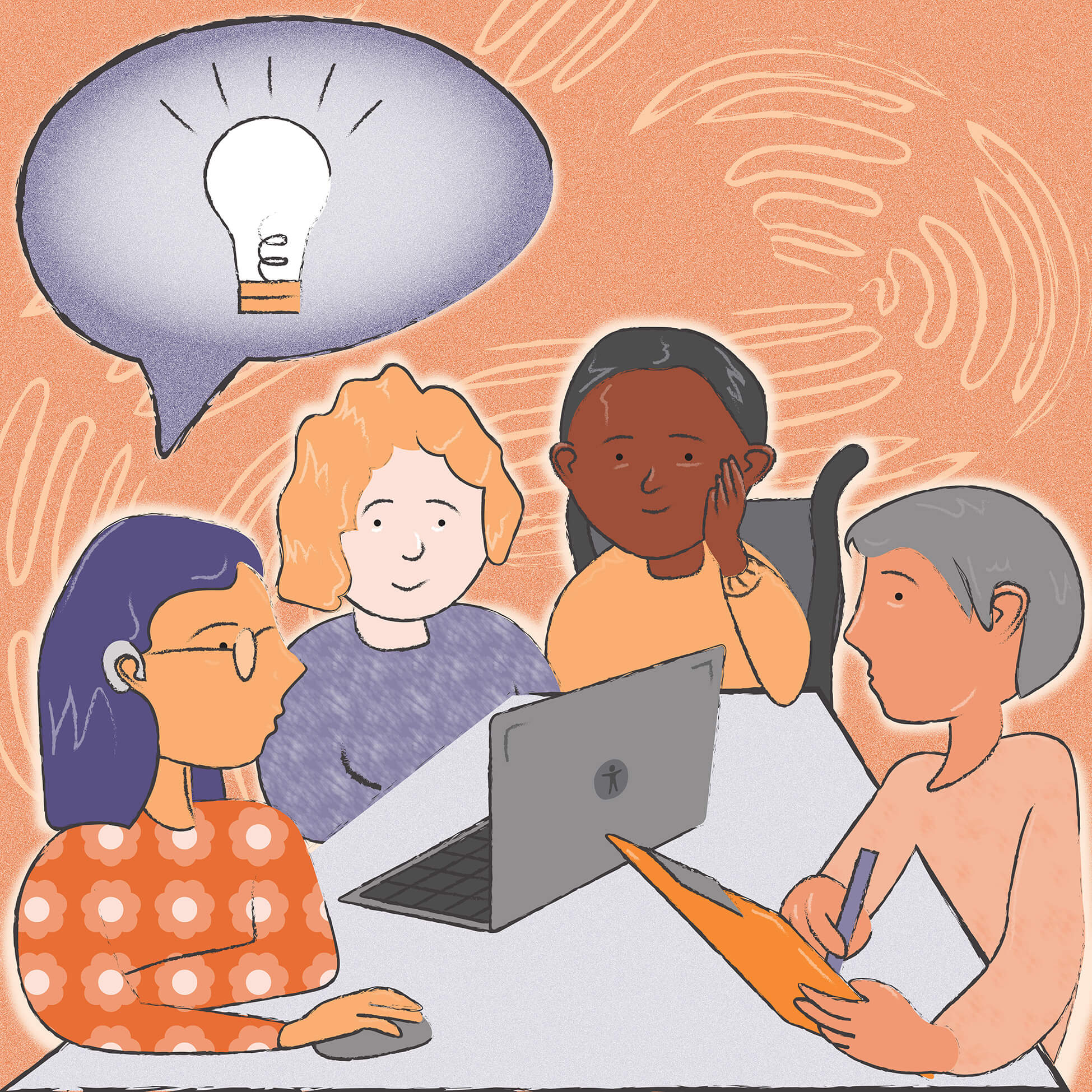We asked Thomas Sluiter, of As We Are Research, to share his approach to user research for Easy Read content with us.
Putting yourself in your readers’ shoes
When creating content, you will always ask yourself: Who am I creating this for?
When it comes to creating Easy Read content, this question becomes even more important. You are now embarking on a mission to make content accessible to people who may otherwise miss out. You’ll want to understand their specific needs, their pain points, their preferences.
Building on solid foundations
Creating Easy Read requires a deep knowledge of the diverse audiences you are creating for. The Information Access Group has over a decade of experience in creating accessible content for different audiences. This expertise has grown from a continuous process of creating and testing content with the target audiences.
Easy Read principles
Creating Easy Read is a creative process based around a series of principles, such as:
- focusing on simplicity
- using large font sizes and plenty of white space
- defining difficult words
- using images to support the text.
Additionally, the Information Access Group make sure the content, whether in a document or HTML format, is accessible and meets the Web Content Accessibility Guidelines 2.2 Level AA.
Why still test?
The original content may be about complicated procedures, which can be challenging to understand for most people. Easy Read creators are tasked to re-work the original content in a way that is easier to understand, yet still fully informative. Resulting in a unique body of work.
A solid base understanding of your intended user groups is a great starting point when creating Easy Read content. It is, however, close to impossible to get all the nuances right without gaining the perspectives of your intended readers.
So even with the most profound experience, you would still want to know how the content is perceived by the people you are creating for. You want to know what stumbling blocks they may encounter when reading it, what elements are confusing, and what changes can be made to make it the best possible document for them.
Observe, think-out-loud and ask
A great way to get into the shoes of your intended readers is by observing them while reading the content. We aspire to do this in a setting that is closest to how they would read the content in real-life.
By observing we can see where participants may struggle and where they have a-ha moments. We typically ask participants to think-out-loud to get a sense of what goes well and what seems confusing.
After having observed a participant, it is time to ask some questions. We like to start by asking what the content was about, just to get a sense of their understanding of the content.
We will then progress to asking about their opinion on the content and format, while seeking clarification of some observations made during reading. We follow this up with targeted questions around confusing elements, good examples, image choices, document length and anything else deemed relevant to the participant and the design team.
Focused output – a time saver
The research leads to a collection of insights that will help content creators make meaningful changes. Ultimately, Easy Read creators are looking for solutions that work for all target user groups. Good research helps to find a clear direction and solutions that can work for all users.
User group selection – not just ticking a box
User groups that benefit from Easy Read, include:
- people with disability
- people with low levels of literacy
- First Nations people
- people who use languages other than English
- people who use Auslan as their first language
- older people
- people who are time-poor.
It is evident that there is a wide range of possible audiences for Easy Read content, with every person having their individual
needs and preferences. Choosing who to invite for user testing requires careful consideration, rooted around vision, type of content and budget.
How many participants?
As we have seen, Easy Read audiences are diverse, with different needs and abilities. So, you would be wise to consider inviting multiple user groups.
As a rule of thumb, 5 participants per user group is the sweet spot for collecting meaningful feedback. It allows for identifying most issues, while getting a clear sense of prioritisation on what problems to address. This number is ideal when there is budget to invite multiple user groups to get solid feedback.
Because user groups will have overlapping needs and preferences, inviting 3 participants per user group can be an economical option. It is sufficient to spot issues, while getting a good sense of varying needs.
When budgets are tight, it is regarded that some testing is better than no testing at all.
It is, however, important to be aware of the limitations of testing with a small number of participants. It allows for spotting issues, but it becomes harder to know what to prioritise. Special care is considered where findings differ between user groups. This is where previous experience of the Easy Read creators and researchers is crucial, as they can judge the feedback in relation to previous findings.
What feedback to expect?
So what can you expect from testing Easy Read content? Firstly, we are looking at how well it is understood and gather spontaneous feedback. The good, the bad, the in-betweens. We typically focus on things like:
- any good and/or confusing examples
- choice of images and icons
- how well the messages are communicated
- information density
- language and readability
- layout and design
- line spacing
- the way complex terms are explained.
Depending on the media we may also focus on usability on various devices.
The bottom line
User research contributes to a collective understanding of the diverse audiences who use Easy Read. It keeps the output rooted in user needs, with an aim to give access to clear and accurate information.
About the author

Thomas Sluiter is an independent and trusted research professional who supports the Information Access Group with understanding the needs and desires of our target audiences.
His collaborative approach allows us to put the needs of our audiences central to our content development. You can learn more about Thomas' approach on the As We Are Research website. You can also reach out to Thomas on LinkedIn.


